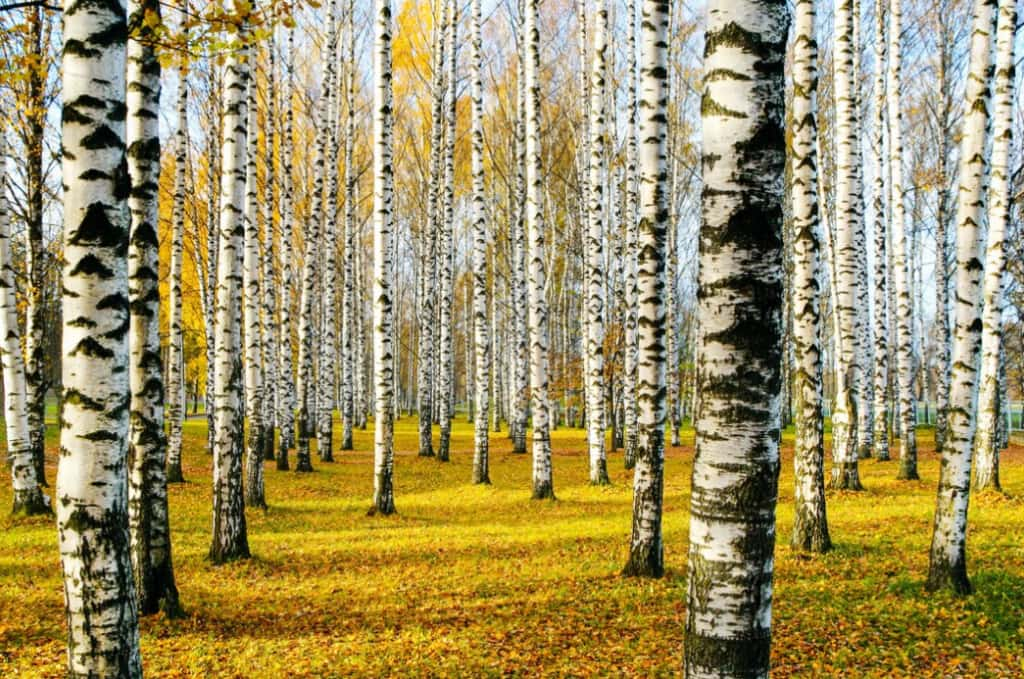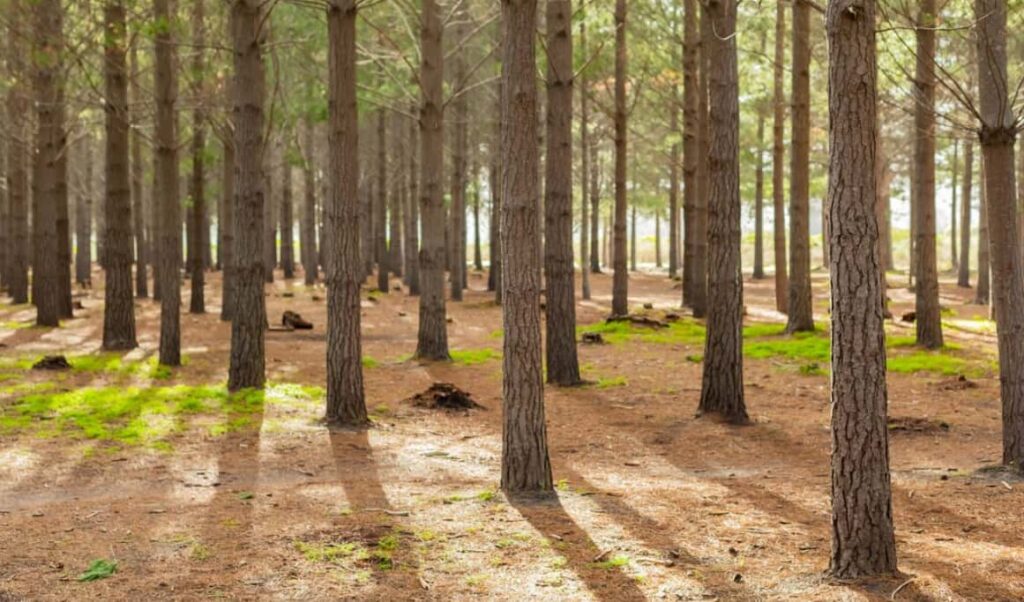Hardwood trees are not only known for their enduring beauty but also for their potential to yield substantial profits quickly. If you’re considering venturing into the realm of cultivating fast-growing hardwood trees, this comprehensive guide is your roadmap to success. Dive into the world of advanced techniques in growing fish sustainably, providing a holistic perspective on sustainability practices across ecosystems.
A Guide to Cultivating High-Value Hardwood Trees
With dedication, ample space, and persistence, cultivating hardwood trees can be a rewarding venture. Hardwood trees not only offer the potential for timber sales, but they also provide value through their saplings, seeds, and edible yields such as fruits or nuts. This guide delves into 13 hardwood species that stand out for their high-profit potential.
The lineup of the most financially rewarding hardwoods to cultivate includes species like walnut, oak, maple, cherry, ash, birch, poplar, elm, dogwood, chestnut, hackberry, basswood, and willow. These varieties are prized for their timber, nut harvests, young plant sales, and even ornamental appeal.
Opting for these species can convert your land into a profitable and eco-friendly enterprise. We will provide you with essential details and the various applications for the wood from each tree type to assist in identifying the most suitable choice for your needs.
Choosing Profitable Hardwood Trees to Enhance Your Land
Cultivating certain varieties of hardwood trees on your property can significantly increase its profitability. We’ll explore several top-performing hardwood species that are both viable and rewarding to grow.
Black Walnut: A High-Yield Hardwood
The black walnut tree stands out as a high-yield hardwood, sought after for both its fine-quality timber and edible nuts. These trees mature into substantial sizes, offering wood that is in high demand for its use in crafting furniture, intricate cabinetry, elegant flooring, bespoke coffins, and even precision parts for firearms. The wood’s stability post-seasoning adds to its desirability for craftsmen.
Oak: A Sturdy and Profitable Wood
Oak trees, including varieties like the red and white oak, are esteemed for their robust and enduring timber. They typically soar to heights of 50 to 80 feet, with red oaks reaching their full stature at around 60 to 75 feet. For those investing in hardwood for timber, red oaks are a prime selection due to their fast growth, resilience, and the broad, sprawling canopy that results in a straight-grained wood with minimal knots, enhancing its value for high-quality flooring, distinguished furniture, and millwork applications.
Maple Trees: Versatile and Valuable
Maple trees offer diverse profitability options. The sugar maple stands out with its superior wood quality and its sap, which is a source of the much-loved maple syrup. Cultivating sugar maples provides a dual-income stream, from both timber and syrup production.
The ornamental Japanese maple, valued for its stunning wood and landscaping appeal, is ideal for enhancing garden aesthetics and can be harvested for its wood, utilized in premium furniture and cabinetry making.
Cherry Trees: Beautiful and Bountiful
Cherry trees combine the beauty of their richly colored, fine-grained wood with the bonus of fruit production, making them a dual-purpose investment. Cherry wood’s popularity in furniture and decorative woodwork adds a lucrative dimension to growing these trees, while the annual fruit yield can supplement your earnings.
Ash Trees: Robust and Resilient
Ash trees produce wood that is remarkably sturdy and elastic, making it perfect for items that require resilience and shock absorption, such as tool handles and sports equipment. Investing in ash trees can be advantageous if you target markets that value these particular wood properties.
Birch Trees: Broadly Utilized and In Demand

The appealing characteristics of birch wood, with its light hue and unique grain, make it a favorite for a wide array of products ranging from everyday household items like broom handles and toys to specialized crafts. Birch wood’s versatility extends to eco-friendly disposable items such as ice cream sticks and toothpicks, thanks to the attractive finish of paper birch. Cultivating birch trees can be profitable, especially when you can fulfill the high market demand for its versatile wood.
Elm Trees: Robust and Multifunctional
Elm trees produce a robust and resilient wood, making them a valuable hardwood species for various uses. Not only is elm wood utilized in furniture making and construction, but these trees also serve an aesthetic role in landscaping, enhancing environments with their grandeur and providing ample shade.
Dogwood Trees: Compact and Precious
Despite their relatively diminutive stature, dogwood trees yield high-quality wood that is a favorite for detailed craftwork and woodturning. For those with limited space or a preference for managing smaller species, dogwoods present a viable option for profitable hardwood cultivation.
Willow Trees: Flexible and Diverse
Willow wood is known for its light weight and adaptability, suited to a range of uses from artisanal basketry to crafting sturdy furniture and sports equipment like cricket bats. Cultivating willows can be quite profitable, especially when marketed for these specialized uses.
Poplar Trees: Rapid Growers for Quick Returns
Poplar trees are celebrated for their rapid growth and impressive size, with some varieties reaching up to 165 feet in height and 70 feet in width. Their wood is commonly sought after for its stability and affordability, used in creating paint-grade cabinetry, upscale furniture, and durable hand tools. The ample shade provided by their vast canopies also adds value.
Basswood Trees: Ornamental and Productive
The American basswood is distinguishable by its fragrant yellow-white blossoms and lush canopy, often cultivated as ornamental shade trees. Known colloquially as the “bee tree,” it contributes to the production of basswood honey. This fast-growing hardwood is favored in the timber industry for its pliable, sturdy wood that resists splitting, ideal for crafting cabinets and furniture.
Hackberry Trees: Hardy and Adaptable
Hackberry trees are robust, capable of thriving across diverse soil types and fluctuating climatic conditions. Their resilience to environmental stresses such as high winds, torrential rains, and urban pollution makes them a hardy choice. Preferred by many woodworkers for their resemblance to elm but with superior disease resistance, hackberry wood is a versatile material for a variety of projects.
Chestnut Trees: Rapid Growth with Bountiful Harvests
Incorporating chestnut trees into your landscape can yield considerable financial rewards. Their timber is in demand for its use in furniture and other woodworking creations. Beyond their timber value, chestnut trees are also among the quicker-growing hardwoods, offering the added benefit of a nut harvest within 3 to 7 years of planting, providing a dual stream of income from both wood and nuts.
Optimizing Revenue Streams with Hardwood Cultivation

Enhancing the economic yield from hardwood trees involves several strategies that could substantially increase profits:
Lumber Production from Mature Hardwood Trees
- Consider harvesting your hardwood trees for lumber, particularly high-value species like red oak, black walnut, and sugar maple;
- To maximize their value, it’s essential to cultivate them under ideal conditions, maintaining proper spacing and thinning;
- The value of hardwood timber escalates with the tree’s age and size, so patience can lead to premium pricing.
Nut Harvest from Hardwood Varieties
- Diversify your hardwood tree selection to include nut-bearing varieties like black walnut and chestnut trees;
- These trees offer a two-fold financial gain: valuable timber and a crop of nuts;
- The nuts can be sold raw, processed, or used as ingredients, providing an additional revenue channel.
Bonsai and Ornamental Trees for Aesthetic Appeal
- Japanese maples and other species suitable for bonsai are in high demand for ornamental purposes;
- Cultivating such trees can cater to the lucrative market of enthusiasts and those seeking distinctive landscaping features;
- Expand your range to include ornamental flowering and fruit-bearing trees, which can fetch high prices for their aesthetic and practical benefits.
Sales of Seedlings and Saplings for Growth Expansion
- Generate income by propagating and selling seedlings or saplings from your hardwood trees;
- This offers another layer of profitability, appealing to individual gardeners, nurseries, or landscaping professionals looking for quality young trees to establish their own growth projects.
Conclusion
The cultivation of hardwood trees can yield substantial profits, highlighting the potential for a sustainable and rewarding business venture right in your own backyard. By selecting profitable tree species such as walnut, oak, maple, and more, you can reap numerous benefits from lumber production, nut harvesting, seedling propagation, or even landscaping purposes. In addition, strategies such as harvesting mature trees, selling nuts, or utilizing hardwood trees for landscaping can further enhance profitability. Whether you’re a seasoned grower or a beginner, the cultivation of hardwood trees is a worthwhile endeavor that promises a sustainable source of income while contributing positively to our environment.